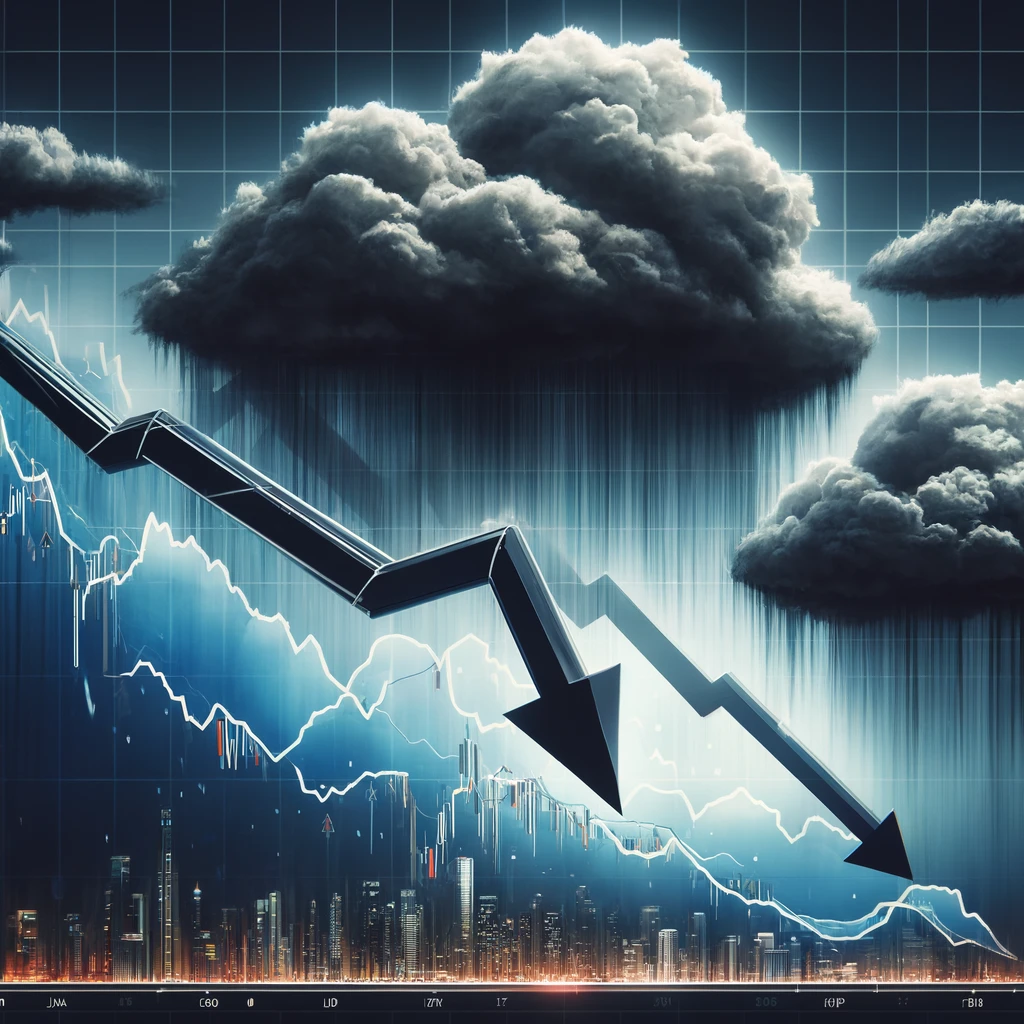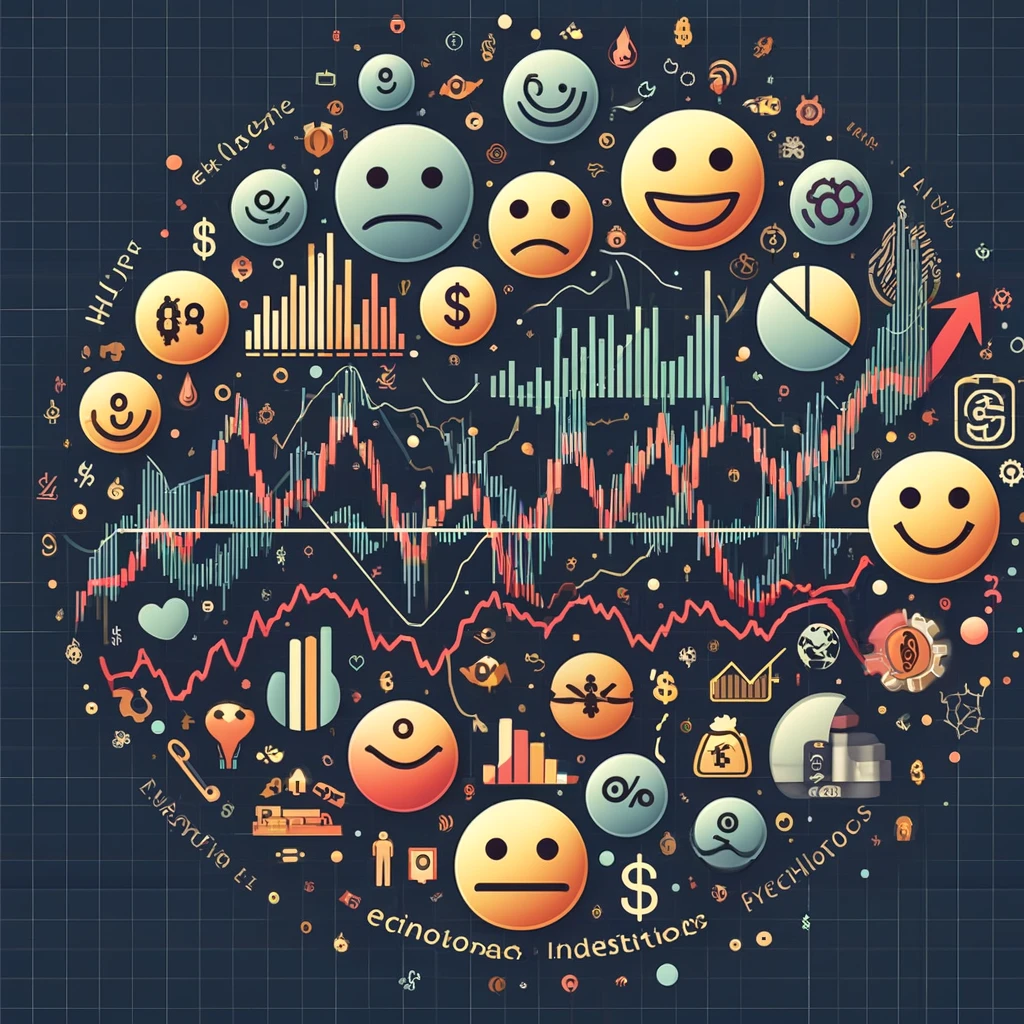The stock market is a complex and dynamic entity, pulsating with the rhythm of economic and psychological forces that drive the buying and selling decisions of millions of investors.
At the heart of this financial ecosystem are the market cycles, specifically “Bull vs Bear Markets,” each defining different phases of economic and market conditions.
Understanding these cycles is crucial for anyone looking to invest wisely and navigate the tumultuous waters of stock trading.
A bull market is characterized by rising stock prices, generally climbing 20% or more from recent lows. It’s a period of prosperity, investor confidence, and economic recovery that can last for several years.
Conversely, a bear market features falling stock prices, with declines of 20% or more, marked by widespread pessimism and often accompanying economic slowdowns.
For investors, the ability to recognize the signs of each market phase and understand their underlying causes and triggers is invaluable.
It can mean the difference between capitalizing on opportunities to grow wealth and incurring significant losses.
This blog post aims to demystify these critical phases of the stock market, providing you with the knowledge to make informed investment decisions.
What is a Bull Market?
![]()
A bull market refers to a financial market of a group of securities in which prices are rising or are expected to rise.
The term “bull” is used because of the way a bull thrusts its horns upward, symbolizing the movement of the market.
This phase is often accompanied by an increase in investor confidence and the expectation that strong results should continue for an extended period.
The primary characteristics of a bull market include:
- Rising Stock Prices: This is the most apparent sign of a bull market. Over an extended period, the prices of most stocks are on an upward trajectory.
- Economic Strength: Bull markets often start when the economy is beginning or in the midst of recovery from a recession. Indicators of economic strength include a drop in unemployment, increased manufacturing activity, and a healthy GDP growth rate.
- Investor Confidence: Optimism prevails during bull markets. Investors believe that the upward trend will continue, which encourages more buying and investment in riskier assets.
- High Trading Volumes: As more investors get involved in the market, trading volumes typically increase, further pushing up stock prices due to heightened demand.
Historical Examples
One of the most notable bull markets began in March 2009, after the financial crisis of 2008.
Despite widespread economic uncertainty initially, this bull market sustained an upward trajectory for nearly 11 years, making it the longest in history.
It was driven by low-interest rates, global economic recovery, and massive investment in technology stocks.
Another historical example is the bull market of the 1990s, fueled by the dot-com boom. This era saw a significant rise in tech stocks and widespread investor enthusiasm for internet-based companies.
Another historical example is the bull market of the 1990s, fueled by the dot-com boom.
Another historical example is the current bull market, which began after the market crash caused by the COVID-19 pandemic.
What is a Bear Market?

A bear market is characterized by a prolonged period of falling stock prices, typically by 20% or more from recent highs.
The term “bear” is used because bears swipe downwards with their paws, reflecting the downward trend in the market. This type of market is often accompanied by widespread pessimism and economic contraction.
The primary characteristics of a bear market include:
- Declining Stock Prices: This is the most defining feature of a bear market, with prices falling sharply across many sectors.
- Economic Downturn: Bear markets often occur alongside or precede recessions. Indicators like increasing unemployment, falling productivity, and declining retail sales are common.
- Low Investor Confidence: Fear and pessimism dominate, causing investors to sell off their holdings to prevent further losses, which can exacerbate the decline in stock prices.
- Low Trading Volumes: As more investors pull back from the market, trading volumes tend to decrease, which can also contribute to lower stock prices.
Historical Examples
The Great Recession of 2008 triggered one of the most significant bear markets in recent history. Following the burst of the housing bubble and the collapse of major financial institutions, global markets plummeted.
Stock prices fell dramatically, and recovery took several years, marked by significant government intervention.
Another example occurred during the early 2000s following the collapse of the dot-com bubble. As the excessive speculative investments in technology companies unravelled, the NASDAQ and worldwide markets suffered a severe decline, marking a prolonged bear market.
Causes and Triggers of Market Cycles

Market cycles are influenced by a complex interplay of economic, psychological, and external factors.
Understanding these can provide valuable insights into potential market movements.
Economic Factors
- Interest Rates: Low interest rates tend to encourage borrowing and investing, which can help fuel a bull market. Conversely, high interest rates may decrease borrowing, leading to less investment and a bear market.
- Inflation: Moderate inflation is often seen in bull markets as demand for goods and services grows. High inflation, however, can lead to increased costs and reduced earnings, contributing to bear markets.
- Economic Indicators: GDP growth, employment rates, and consumer spending are vital indicators. Positive data typically support bull markets, while negative trends can trigger bear markets.
Psychological Factors
Investor sentiment plays a crucial role in market dynamics. Optimism can drive markets higher, while fear can lead to sell-offs.
Media coverage and market speculation can significantly influence investor behaviour and sentiment.
External Triggers
Geopolitical events, pandemics, and technological disruptions can also trigger shifts in market cycles.
For instance, geopolitical tensions can create uncertainty that leads to market sell-offs, while technological breakthroughs can spur market booms.
Navigating Bull and Bear Markets

Investing successfully requires adapting strategies to current market conditions. Here are some strategies for each type of market:
In Bull Markets
- Stay Invested: Participate in the rising market by maintaining a diversified portfolio.
- Consider Growth Stocks: Companies with the potential for significant growth can provide substantial returns during bull markets.
- Monitor Overvaluation: Be cautious of excessively high valuations, which could indicate a nearing peak.
In Bear Markets
- Defensive Stocks: Invest in industries less affected by economic downturns, like utilities and consumer staples.
- Short Selling: This advanced strategy involves selling borrowed stocks expected to decrease in value.
- Capital Preservation: Focus on preserving capital to reinvest when the market stabilizes.
Tips for Risk Management in Volatile Markets
Managing risk effectively is crucial, especially in volatile markets where rapid changes can occur unexpectedly.
Here are some key strategies to help safeguard investments during times of high volatility:
- Set Stop-Loss Orders: A stop-loss order is an order placed with a broker to buy or sell once the stock reaches a certain price. A stop-loss is designed to limit an investor’s loss on a security position. Setting a stop-loss order for 10% below the price at which you bought the stock will limit your loss to 10%.
- Diversification Across Asset Classes: Don’t just diversify within stocks. Consider other asset classes like bonds, commodities, or real estate, which may behave differently under the same economic conditions.
- Regular Portfolio Review: Frequent reviews of your portfolio to assess risk and adjust your investment mix can protect against unexpected market movements. This is crucial in maintaining a balanced approach that aligns with your investment goals and risk tolerance.
- Use of Derivatives for Hedging: Options and futures can be used to hedge against a downturn in the market. This strategy can help lock in profits or protect against losses by providing additional income or insurance to the portfolio.
- Emotional Discipline: Volatile markets can test the emotions of any investor. It’s important to stick to your investment plan and avoid making impulsive decisions based on short-term market movements.
Predicting Future Market Trends

Predicting market trends involves understanding historical patterns, economic indicators, and investor sentiment.
While perfect predictions are impossible, using a combination of analytical tools can help forecast probable future movements.
Tools and Techniques for Market Prediction
- Technical Analysis: This involves studying past market data, primarily price and volume, to forecast future market behaviour. Technical analysts look for patterns and signals that indicate the direction of the market.
- Fundamental Analysis: This method evaluates a company’s financial statements to determine its fair value, helping investors decide whether to buy, hold, or sell a stock.
- Economic Indicators: Analysts use indicators like GDP growth rates, employment data, and consumer spending to gauge the overall health of the economy and predict its impact on the stock market.
- Sentiment Analysis: This relatively new technique involves analyzing trends in investor sentiment, which can be gleaned from social media, news trends, and other public communications.
The Role of Global Events
Global events such as geopolitical changes, new government policies, or significant technological breakthroughs can also play a critical role in shaping market trends.
The impact of such events often depends on the market’s perception and reaction, illustrating the psychological aspect of investing.
Limitations in Predictions
It’s important to acknowledge the limitations in predicting market trends. Markets can be highly volatile and influenced by unpredictable variables.
Thus, while tools and techniques can provide valuable insights, they should be used with caution and in conjunction with other investment strategies.
Conclusion

Understanding stock market cycles—both bull and bear markets—is essential for making informed investment decisions.
By recognizing the characteristics and triggers of these cycles, investors can better prepare for the inevitable ups and downs of the market.
Armed with this knowledge, you can devise strategies to not only protect your investments but also capitalize on opportunities that arise during each phase of the market cycle.










